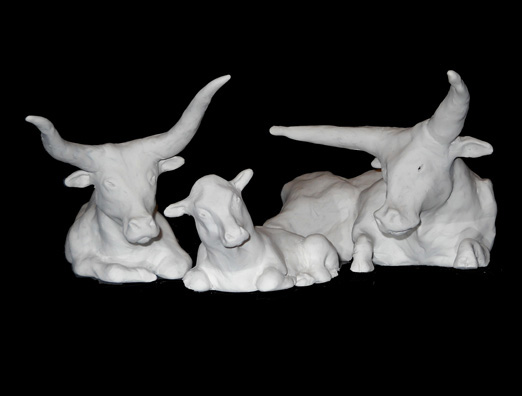Cow Family - Clay Models for Bronze Casting

Many sculptures - whether stone or bronze - begin as clay or plaster models and are only later rendered in the more permanent media and after much effort. In fact, it was common for many of the most famous sculptors to actually hire the final stage out. For instance, Rodin would take his models - as we said, clay or plaster - to a professional foundry who would do the actual bronze casting. The artist does not - and often is not - even present when the casting is done, and many do not even do their own finishing, chasing, and polishing. So the difference between when the model was actually prepared by the artist and the time it was cast and finished isn't that important for the final bronze statue to be considered an original. So you can get a few raised eyebrows when visitors to a museum like the famous (and quite good) Rodin Museum in Philadelphia see original Rodins that were cast seven to eight years after the artist died. The author of CooperToons even heard (during a discussion in an art class) that only one of Degas' bronze statues which you can see displayed in many major museums throughout the world was cast in his lifetime.
And yes, some stone sculptors used the same tack. By carefully measuring the model - "pointing" it's called - it is possible to copy the model in a mechanical manner, and so a skilled stone carver can reproduce the artist's original. Rodin - who preferred bronze but is credited with some stone sculptures - also passed any stone carving along to the craftsmen. But the stone statue counts as the original and is actually credited to the artist, not the carver.
But handing off the hard part of the job was (and is) not always the case with all sculptors. Both Michelangelo and Bernini did much of their own carving, albeit with assistants
We can now resume breathing.